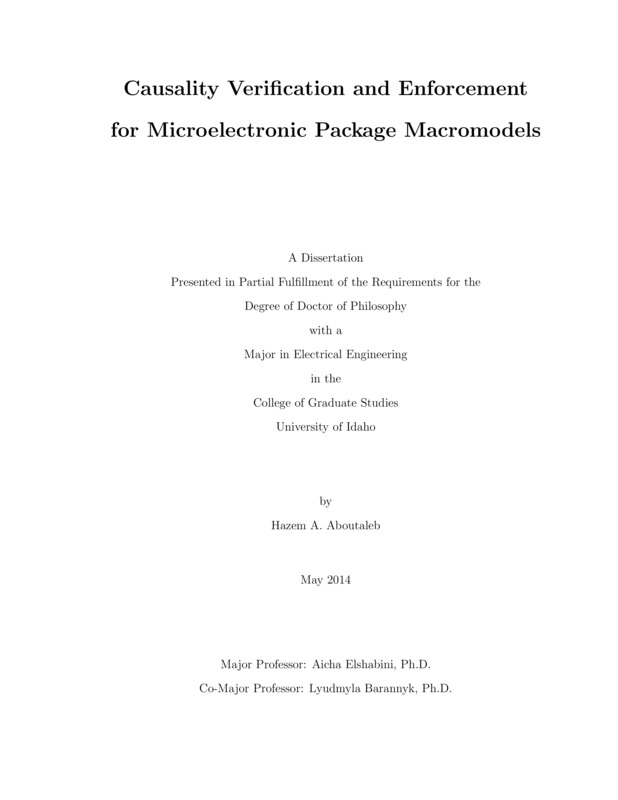Causality Verification and Enforcement for Microelectronic Package Macromodels
Aboutaleb, Hazem A.. (2014). Causality Verification and Enforcement for Microelectronic Package Macromodels. Theses and Dissertations Collection, University of Idaho Library Digital Collections. https://www.lib.uidaho.edu/digital/etd/items/aboutaleb_idaho_0089e_10165.html
- Title:
- Causality Verification and Enforcement for Microelectronic Package Macromodels
- Author:
- Aboutaleb, Hazem A.
- Date:
- 2014
- Keywords:
- Causality enforcement Causality verification Fourier continuation Hilbert transform Macromodels Periodic extension
- Program:
- Electrical and Computer Engineering
- Subject Category:
- Electrical engineering
- Abstract:
-
The design and analysis phase of passive structures of high speed microelectronic systems require suitable macromodels that capture the relevant electromagnetic properties that affect the signal and power quality. These models are constructed either from direct measurements or electromagnetic simulations using macromodeling techniques such as Vector Fitting, for example. The raw data that are used for extraction of such models have the form of discrete port frequency responses and they may be contaminated by errors due to a noise, inadequate calibration techniques in case of direct measurements or approximation and discretization errors in case of numerical simulations. Besides, these data are typically available over a finite frequency range as discrete sets with a limited number of samples. All this may affect the performance of the macromodeling algorithm. Often the underlying cause of such behavior is the lack of causality in given data.
The thesis conducts a study of system causality, starting from an overview of macromodeling of microelectronics packages, signal and power distribution networks and simultaneous switching noise. Various system causality definitions, conditions and requirements are presented. Different available methods for causality verification in time and frequency domains are discussed.
Motivated by the limitations and drawbacks associated with conventional methods of causality verification and enforcement, namely, that the frequency responses are available on a finite bandwidth in a discrete form, the thesis presents two new methods that check and enforce causality in the frequency domain. The methods are based on Kramers-Kr\"onig relations, also called dispersion relations. Both of methods construct periodic continuations of the given frequency responses, so that the resulting function is periodic on a wider domain.
The first method uses periodic polynomial continuation with the subsequent use of Fast Fourier Transform to compute discrete Hilbert Transform and characterize causality. The second approach approximates frequency responses by a Fourier series using SVD-based method. Causality is imposed directly and exactly on Fourier coefficients. The two methods are successfully tested on several analytic and simulated examples that represent interconnect macromodeling systems to show excellent performance of the proposed techniques. Artificial causality violations were imposed to demonstrate that both methods are able to detect them successfully.
- Description:
- doctoral, Ph.D., Electrical and Computer Engineering -- University of Idaho - College of Graduate Studies, 2014
- Major Professor:
- Elshabini, Aicha; Barannyk, Lyudmyla
- Committee:
- Barlow, Fred; Johnson, Brian; Ay, Suat; Potirniche, Gabriel
- Defense Date:
- 2014
- Identifier:
- Aboutaleb_idaho_0089E_10165
- Type:
- Text
- Format Original:
- Format:
- application/pdf
- Rights:
- In Copyright - Educational Use Permitted. For more information, please contact University of Idaho Library Special Collections and Archives Department at libspec@uidaho.edu.
- Standardized Rights:
- http://rightsstatements.org/vocab/InC-EDU/1.0/

